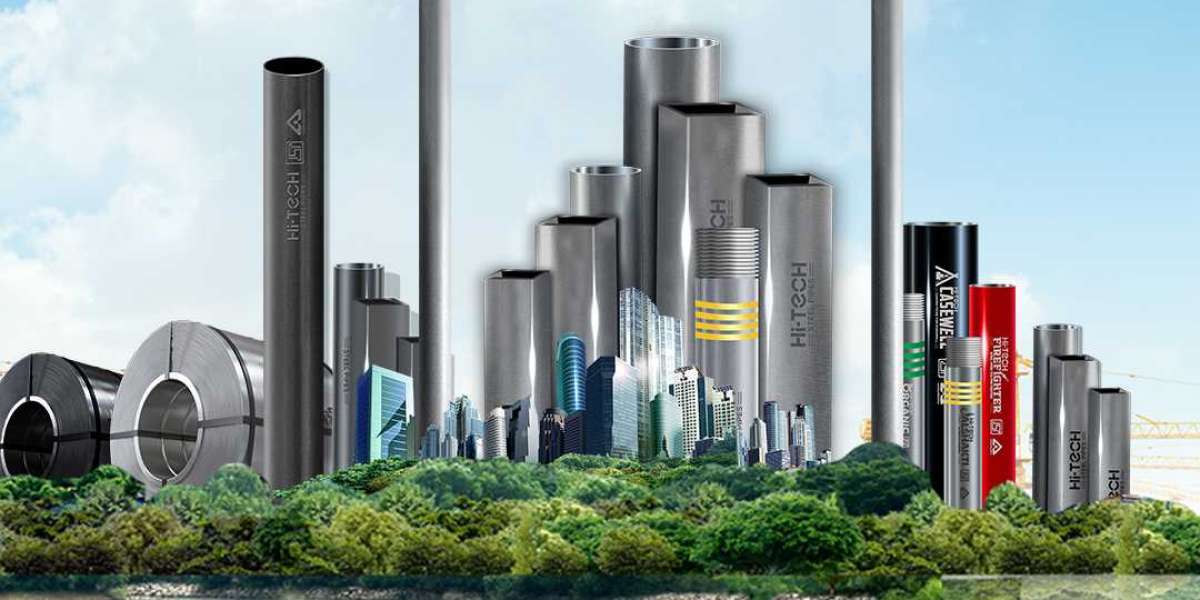Electric Resistance Welded (ERW) pipes represent a significant advancement in the piping and tubing sector, known for their strength, efficiency, and wide range of applications. These pipes are manufactured through the electric resistance welding process, which involves fusing steel strips together through electric currents. This method produces high-quality, seamless pipes and tubes used across various industries. This blog delves into the details of ERW pipes, their manufacturing process, advantages, and applications, highlighting their importance in today's industrial landscape.
Understanding ERW Pipes and Their Manufacturing Process
ERW pipes are created by bending steel coils into cylindrical shapes and then welding the longitudinal seams using high-frequency electric resistance. The process begins with uncoiling and flattening the steel coil, followed by edge milling to prepare the edges for welding. The strips then pass through a series of rollers that gradually form them into a tubular shape. As the edges of the tube meet, an electric current is applied to heat the steel to the point where the edges fuse together, creating a strong, longitudinal weld without the need for additional welding material.
This process allows for the production of pipes with tight tolerances and a smooth surface finish. ERW pipes can be made in a range of sizes and thicknesses, making them a versatile option for various applications.
Advantages of ERW Pipes
ERW pipes offer numerous benefits over traditional welded pipes, including:
Strength and Durability: The high-frequency electric resistance welding process results in a strong bond that ensures the pipe's integrity and durability, making ERW pipes suitable for high-pressure applications.
Uniformity and Precision: ERW pipes have uniform wall thicknesses and tighter dimensional tolerances compared to seamless pipes. This precision is crucial in applications where accuracy and consistency are essential.
Cost-Effectiveness: The ERW process is more efficient and less labor-intensive than traditional welding methods, resulting in lower production costs. These savings can be passed on to the consumer, making ERW pipes a cost-effective solution.
Versatility: They can be manufactured in various sizes and lengths, catering to different pressures and uses. This flexibility makes them suitable for a wide range of applications.
Environmentally Friendly: The ERW manufacturing process is relatively clean, with minimal environmental impact compared to other piping production methods.
Applications in Various Industries
ERW pipes are used across a broad spectrum of industries due to their strength, versatility, and cost-effectiveness:
Oil and Gas: They are widely used in the oil and gas industry for transporting crude oil, natural gas, and other fluids under high pressures.
Automotive: ERW pipes are used in the automotive industry for manufacturing structural components and frames, thanks to their high strength and precision.
Construction and Infrastructure: In the construction industry, these pipes are used for structural support, scaffolding, fencing, and in water, sewage, and gas pipelines.
Agriculture: ERW pipes are used in irrigation systems, greenhouse structures, and for water supply lines, benefiting from their durability and resistance to corrosion.
General Engineering: They are also employed in machinery, equipment manufacturing, and in the production of various engineering components.
Future Outlook and Innovations
The future of ERW pipes looks promising, with ongoing research and technological advancements aimed at enhancing their quality, efficiency, and range of applications. Innovations in welding technology, material science, and quality control are expected to produce even stronger, more reliable, and cost-effective ERW pipes.
Additionally, as industries continue to seek sustainable and efficient materials, the demand for ERW pipes is likely to increase. Their adaptability and lower environmental impact make them a preferred choice for new projects and infrastructure upgrades alike.
Conclusion
ERW pipes are a cornerstone of modern industry, offering a blend of strength, precision, and versatility. Their wide range of applications across different sectors underscores their importance in today's industrial landscape. As technology advances, the production and use of ERW pipes are set to become even more efficient and widespread, continuing to play a crucial role in driving industrial innovation and development.









